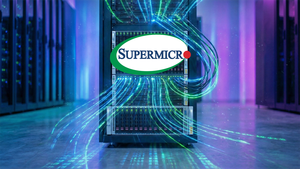Net Zero Methodology: Yes It Is Complicated, but Worth Doing Thoroughly
by Michael King
SOURCE: Cisco Systems Inc.
DESCRIPTION:
Many corporations around the world have set net zero commitments, detailing the ways in which they will address the various levels of carbon emissions of their businesses (defined by scope). In September of 2021, Cisco committed to reach net zero across Scope 1, Scope 2, and Scope 3 emissions by 2040. For Cisco, this means tackling our single largest source of emissions, Use of Sold Products (Scope 3, Category 11) which in FY21 represented an estimated 73 percent of our total greenhouse gas (GHG) emissions.
Taking on an ambitious challenge like this requires two things. First, establishing a methodology where the estimated GHG emissions from the use of our sold products can be reliably calculated year over year to help ensure the company is trending in the right direction. And second, having confidence in the numbers calculated. Once this calculation is complete, we can target our initiatives at our products that have the largest contribution to our overall total emissions, and then scale these initiatives across our company. Potential initiatives could include further improving the energy efficiency or continuing to reduce the overall energy consumption of our products.
Category 11: Use of Sold Products Calculation
GHG emissions from the use of our sold products are calculated based on the Greenhouse Gas Protocol Technical Guidance for calculating Scope 3 Emissions (version 1.0) methodology. Use phase is defined as “…when the consumer takes possession of the product and ends when the product is discarded.” Our products’ emissions are classified as direct use-phase emissions because they consume energy during use. As an example, for a data center customer, that could mean receiving one of our UCS C240 M6 servers, running it around the clock for 5 years until the customer takes advantage of our product takeback and reuse program to return it to Cisco for remanufacturing or recycling.
The process for calculating direct use-phase emissions is straightforward in theory, but more difficult when scaling across thousands of products, each of which can include multiple configurations (for example, our 8800 series products can be configured with multiple types and quantities of line cards, route processors, fabric cards and optical modules). The calculation of direct use-phase emissions requires the aggregation of the following data:
- Quantities of products sold
- Electricity consumption per use of product
- Emission factors for electricity (estimating by country average when available, or global average otherwise)
- Total lifetime expected uses of product(s)
Once this data has been collected, an estimate of the total use phase emissions for products sold (kg CO2e) can be made using the following formula:
= ∑ (number sold in reporting period × electricity consumed per use (kWh) × emission factor for electricity (kg CO2e/kWh) x total lifetime expected uses of product )
This calculation is a forward-looking estimate. It doesn’t calculate the actual emissions a product may emit in the reporting year. Rather, it accounts for emissions associated with all products sold in that year and future emissions generated over the product lifetime. Figure 5.3 on page 33 of the Green House Gas Protocol Corporate Value Chain (Scope 3) Accounting and Reporting Standard lays out the time boundary for each Scope 3 category.
Key factors in the use-phase calculation
Quantities of products sold
To calculate this value, we look at the number of products we ship and track them through our partners and distributors to their end country use location.
Electricity consumption per use of product
In general, we assume our products are used 24/7, so to estimate the electricity consumption per use of products we must first find a “typical” power value for each product. This is simple for a small desktop router or switch, but more complicated for a large rack-mounted piece of equipment that can have many different configurations due to its modular nature. Power consumption for these configurable products is determined by the build, the features enabled, and the traffic patterns the product manages. To find this value, we assemble data across multiple sources ranging from product data sheets, product power calculators and engineering test results. If this data is not available, we use the max load as listed for the product’s power supplies and then reduce that value by a percentage to estimate its “typical” use.
Emission factors for electricity
In the past, we used a global emission factor, but for our FY21 emissions calculations we improved our methodology to use country-specific emission factors from the International Energy Agency whenever available. Emission factors allow us to convert our energy consumption into a unit of GHG emission.
Total lifetime expected use of product(s)
Because our products have varying expected lifetimes, we assume an average of five years. In actuality, it could be anywhere from 2 to 15 years depending on the product type.
Up to this point, we’ve aligned with the GHG protocol methodology stated previously. But when accounting for the total lifetime expected use of product(s), our methodology takes a more precise and granular approach.
Net zero is a state where, as an organization, we add no incremental greenhouse gases to the atmosphere. This means that for any given reporting year, we must account for the GHG emissions of the products already in use (estimated as the previous four years) and what has been sold in the reporting year. This approach allows us to estimate “actual emissions” in a reporting year, as opposed to trying to estimate “future emissions.”
Additionally, to try and estimate future emissions you must also attempt to estimate future reductions in emission factors to provide the most accurate assessment of projected emissions. Using this type of projection-based methodology can overstate the actual emission reductions that may be occurring each reporting year and would then require updates to emissions when new emissions factors are available. The possibility of over-estimating emission reductions is not how Cisco wants to approach its GHG reduction goals, which is why Cisco’s methodology is to estimate the “actual” emissions instead of “future” emissions. A comparison of results from these competing methodologies can be seen in Table 1 above.
Looking at the results in the table above, both methodologies have a declining trend, but our methodology estimates a 12 percent reduction from FY19 to FY21, compared to the future emissions methodology which would estimate a 26 percent reduction. Again, thinking in the context of net zero there are over 3 million metric tonnes of CO2e that are unaccounted for between FY19 and FY21 when using the future emissions methodology.We believe our approach to be more conservative from a GHG reduction perspective by estimating our emissions using the “actual” emissions methodology described above gives us the ability to help drive greater reductions by continuing to take ownership of the GHG emissions from products we’ve sold in previous years.
Connection to net zero
Cisco will continue to refine its emissions calculations as technologies and processes improve, and to engage with its stakeholders in an effort to provide accurate emissions calculations and associated reporting to help drive the greatest GHG emission reductions possible in our effort to achieve net zero by 2040.
Because the goal is net zero, we’ll continue to invest in areas to not only improve our estimates and underlying assumptions related to emissions, but also continue to make our products and services more energy efficient and reduce their associated emissions.
Revisit Cisco’s Environmental Sustainability efforts
KEYWORDS: NASDAQ: CSCO, Cisco, Net Zero, Scope 3 emissions
![]()

More News
View More




Recent Quotes
View More
Quotes delayed at least 20 minutes.
By accessing this page, you agree to the Privacy Policy and Terms Of Service.